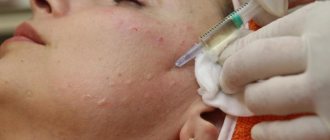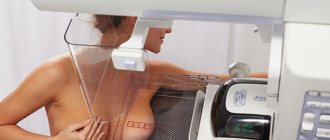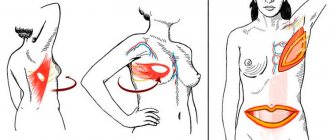Theoretical cultural studies:
Methodology for researching cultural processes. Theoretical study of the forms of cultural existence. Typology of culture
Theoretical cultural studies:
Systematic study of the history of cultural theories. Theories of cultural dynamics and cultural genesis. Gender theory
Theoretical cultural studies:
Cultural semantics and philosophical and cultural anthropology
Applied cultural studies:
Ethnoculturology. Cultural interpretation of archaeological sources
Information about areas of scientific interest
SHORT BIOGRAPHY
Aliev Rastyam Tuktarovich (born in 1989, Astrakhan, Russia) graduated with honors in 2010 with a bachelor's degree and in 2012 a master's degree from the Faculty of History of Astrakhan State University (ASU). In 2015, he completed his graduate studies at ASU and successfully defended his thesis “The comic book hero as a reflection of the neo-mythological paradigm of American mass culture: 1929-2012.” specialty 24.00.01 – Theory and history of culture. Author of more than 30 scientific papers. During 2014-2018, he published more than 12 articles in journals recommended by the Higher Attestation Commission (hereinafter referred to as the Higher Attestation Commission), 1 article in publications indexed by Web of Sciences and Scopus, 3 monographs, 1 textbook. In 2022, as a performer as part of a team of authors, with the support of a targeted grant from the Russian Humanitarian Foundation, Aliev R.T. received the Grand Prix of the “Humanitarian Book of the Year 2017” competition for the best collective monograph “Cultural Security in Heterotopia.” Aliev Rastyam Tuktarovich has been fruitfully engaged in scientific and pedagogical activities at ASU for more than 5 years. Participant of 3 grant projects.
Aliev Tair Rafikovich: Breast reduction. Personal experience
Tair Aliyev, plastic surgeon, chief physician of the “Clinic of the Century,” is confident that breast reduction is one of the most complex and time-consuming operations in aesthetic plastic surgery.
Reduction mammoplasty is performed not only for aesthetic, but also for medical reasons.
Aliev Tair Rafikovich
Too large mammary glands significantly worsen the quality of life of women and affect their health. With hypertrophy of the third - fourth degree, a state of chronic fatigue develops, and subsequently - deformation of the spine with all the ensuing consequences. In advanced countries of the world, these operations are considered medical and are paid for by the state through the social security system. In our country, this problem currently falls on the shoulders of women themselves.
When deciding on surgery, it is important to take into account the patient’s feelings. Consider the problem based not on the bra cup, but on height, weight, constitution, bone structure. Perhaps some patients who want to reduce size D breasts when there is no massive ptosis are making a mistake. At the same time, many of them gave me weighty arguments that size D also causes them discomfort.
It is very important not to rush into this operation.
Breast hypertrophy, like gigantomastia, often appears in childhood. I know of a case where a 12-year-old girl had each gland weighing 8 kilograms and continued to grow. Endocrinologists and specialists in other related fields study the progressive growth of mammary glands. Drugs are prescribed to stop their growth. Plastic surgeons deal with cases of hypertrophy in adults when breast growth has already stopped. However, it is better not to rush with this operation.
If a young girl who has not yet given birth comes to me for a breast reduction, if possible, I try to dissuade her from having the operation before giving birth. To do this, you need to be very careful about her motivation. To figure it out, including with the help of a psychologist, is her view of her own body, or someone “helped” her with this: a friend, and sometimes her own mother. As a doctor, I am obliged to warn: almost any reduction leads to disruption of the ductal system of the mammary glands. In the future, this will not allow breastfeeding; you will have to take medications to stop lactation. Another argument is that after childbirth, breasts tend to change. It may grow a little, or, on the contrary, decrease. As a result, postoperative scars will stretch, the diameter of the areola will expand, and ptosis may occur again. On the contrary, by performing surgery after childbirth and breastfeeding, you can force the gland to maintain its acquired shape for a long time.
Although there are exceptions to any rule. I have had many patients who, after giving birth, were satisfied with the shape and location of the gland. They did not need a second operation.
Now everyone is keen on economical resections for breast reduction. When can and cannot be offered?
For me, plastic surgery has long been built into mathematical models. To get a beautiful and durable result, you cannot break any laws.
When reducing breasts of size F or larger, the new volume should not exceed size D, or better yet, C. More massive breasts may begin to increase again and “creep” down, which will lead to a repeat operation. Significant gland hypertrophy is often a limitation for vertical reduction mammoplasty.
When reducing size G breasts, when the distance from the collarbone to the nipple is more than 28 centimeters, and from the nipple to the fold under the breast is more than 15, you must definitely think about a horizontal scar under the breast. However, in order to have fewer stitches, many suggest limiting ourselves to only a vertical scar. And then the patient appears again at the plastic surgeon. The fashionable trans-areolar reduction mammoplasty - with an incision only around the areola - allows you to achieve only a small breast reduction. Another “hobby” of surgeons is excessive reduction in the diameter of the areolas. It's not always safe. The normal range can be from 4 to 5.5 centimeters. I always leave five. If a complication such as marginal necrosis (death of tissue along the edge of the scar) occurs, these 5 mm will save the situation.
Breast reduction is one of the most complex, lengthy and responsible operations.
With twenty years of experience, I spend at least four to four and a half hours on it. After you have reduced your right breast, you need to reduce your left one in the same way. Make them symmetrical, guess the volume. Secure the glands so that they do not sag in the future.
These are already quite complex tasks. In addition, when performing an operation, the surgeon faces many dangers. When moving the nipple and areola to a new position, it is important to preserve the vessels that feed them - arterial and venous. Knowledge of anatomy and the ability to choose different “legs” for these purposes allows you to do this quite successfully. However, sometimes varying degrees of ischemia (circulatory disorders) occur, up to necrosis - loss of the nipple and areola. It is very important here to be able to correct the situation, to master all the techniques that allow you to restore the areola and nipple. Another crucial moment is suturing. Scars should always be perfect. A patient who wishes to have her breasts reduced should not end up with them disfigured. Therefore, I never trust this stage to anyone, I always apply only cosmetic stitches, and work closely with dermatologists.
On some Internet sites, in material terms, breast reduction is rated significantly lower than breast augmentation, which is technically simpler. This cannot but be alarming. It is unclear what class of specialist performs this operation.
I began to actively take on the elimination of breast asymmetry only in the last ten years...
There are a lot of rather difficult moments here that you can’t learn in one month or one year. For example, a patient has one breast that is normal and the other that is too large. To make one an exact copy of another, you have to think about how to cut the “case” and how much skin to remove. Very often, breasts that are normal in size are not ideal and sag. But the patient refuses to change it. In this case, it is necessary to simulate ptosis on the reduced gland. There are diseases (absence or underdevelopment of ribs on one side, partial absence of the pectoralis major muscle) when one of the glands is undeveloped or practically absent. In this case, you enlarge the smaller breast first. And only then do you select the volume that needs to be removed in order to make the gland on the other side symmetrical. Working with asymmetry is the highest level of mammoplasty, requiring the surgeon to master all types of operations.
The complexity and labor intensity of the operation encourages surgeons to find a way to make their work easier...
I know Russian surgeons who operate in two teams: one works on the right and the other on the left breast. I myself witnessed a similar approach in France. A doctor performing a social security operation walks between three tables. And he tells his colleagues what needs to be done, where and how much to clean. For me, this approach is not acceptable. You need to have a very good tandem to be sure that the team operating on the other side will do exactly the same as you. It’s one thing if it’s a social order aimed at improving the health of the nation. Another thing is that when a woman comes to you with her problem, she pays for this operation herself. When talking to her, I introduce myself to her, and not the whole team. The patient must be sure that I am responsible for her. With any plastic surgery, it is important that the doctor is responsible for the result and can cope with all the problems that arise. And the patient did not find himself homeless in search of a specialist who would correct the mistakes of others.
Interviewed by Svetlana Troitskaya
Interviews with experts
Aliev Tair Rafikovich
Breast reduction: Personal experience
Tair Aliyev, plastic surgeon, chief physician of the “Clinic of the Century,” is confident that breast reduction is one of the most complex and time-consuming operations in aesthetic plastic surgery.
Otari Gogiberidze
I'm interested in complex cases
The leading plastic surgeon of the Klazko group of clinics talks about how important it is to use all existing methods in one operation and come up with a nose shape taking into account the original one.
Leonid Pavlyuchenko
Patient for the perfect belly
The chief physician of the Beauty Surgery clinic, Professor, Doctor of Medical Sciences Leonid Pavlyuchenko, believes that everything in a person should be beautiful and harmonious.
Emma Dolzhikova
Subtleties of an aesthetic surgeon
Emma Dolzhikova heads the Beauty Institute. She knows everything about aesthetic medicine, as she has enormous medical experience.
Vladimir Korczak
Implant selection
Vladimir Korchak was one of the first in the country to begin performing breast augmentation operations: he operated on the first patient in 1990 at the Beauty Institute.
Leonid Pavlyuchenko
Blepharoplasty
The chief physician of the Beauty Surgery clinic, professor, doctor of medical sciences, plastic surgeon Leonid Pavlyuchenko loves when the eyes of his patients shine with happiness and radiate youth. He achieves such results by performing labor-intensive but effective eyelid surgery using new methods.
Leonid Pavlyuchenko
Plastic surgery for age reasons
Beauty and youth are very close concepts. If you think about it, none of us knows what beauty is. This is a philosophical category that is very difficult to define.
Alexander Nerobeev
Plastic surgery for age-related changes
Alexander Nerobeev, professor, doctor of medical sciences, chief physician of the ART Clinic, is confident that “when choosing an operation, a good surgeon always acts in the interests of the patient.
Leonid Pavlyuchenko
Nose surgery: vector theory
Rhinoplasty operations “from Pavlyuchenko” have little in common with what is described in textbooks. To achieve this level of customization, I had to practice rhinoplasty for 25 years. Today I practically do not use any of the so-called basic techniques.
TRAINING
· advanced training under the program “Content of education, educational areas and programs. Modern pedagogical technologies" (Astrakhan Institute of Advanced Training and Retraining", 2015);
· organizational training in the program “Cognitive Psychology” (Astrakhan State University, 2016);
· organizational training under the program “Organizational Psychology” (Astrakhan State University, 2017);
· advanced training in the additional professional program “Creation of electronic educational courses on the LMS Moodle platform” (Astrakhan State University, 2017)
OKVED codes
Aliyev Rovshan Tariel Ogly has the right to engage in 9 types of activities. Main type of activity
| Code | Name |
| 68.20 | Rent and management of own or leased real estate |
Additional activities
| Code | Name |
| 10.71 | Production of bread and flour confectionery products, cakes and pastries for short-term storage |
| 47.24.1 | Retail trade of bread and bakery products in specialized stores |
| 47.25.12 | Retail sale of beer in specialized stores |
| 47.25.2 | Retail trade of non-alcoholic drinks in specialized stores |
| 47.91 | Retail trade by mail or via the Internet information and communication network |
| 56.10 | Restaurant activities and food delivery services |
| 56.29 | Activities of public catering establishments for other types of catering |
| 68.10 | Buying and selling your own real estate |
History of changes in the Unified State Register of Individual Entrepreneurs for 2015–2018
2018
- 18.09.2018
- GRNIP
418774602497248 - SPVZ code
22111
- Code NO
7746
Interdistrict Inspectorate of the Federal Tax Service No. 46 for Moscow
Changing information about an individual entrepreneur contained in the Unified State Register of Individual Entrepreneurs
Documentation:
- P24001 application for amendments to information about individual entrepreneurs (clause 2.1)
- A copy of the notary d-Ti on Babanin d g
2016
- 28.09.2016
- GRNIP
416774602885312 - SPVZ code
23400
- Code NO
7746
Interdistrict Inspectorate of the Federal Tax Service No. 46 for Moscow
Submission of information on registration as an insurer in the executive body of the Social Insurance Fund of the Russian Federation
2015
- 12.10.2015
- GRNIP
415774638189745 - SPVZ code
23300
- Code NO
7746
Interdistrict Inspectorate of the Federal Tax Service No. 46 for Moscow
Submission of information on registration as an insurer in the territorial body of the Pension Fund of the Russian Federation
- 08.10.2015
- GRNIP
415774638173852 - SPVZ code
23200
- Code NO
7746
Interdistrict Inspectorate of the Federal Tax Service No. 46 for Moscow
Submission of information about registration with the tax authority
- 08.10.2015
- GRNIP
315774600337292 - SPVZ code
21211
- Code NO
7746
Interdistrict Inspectorate of the Federal Tax Service No. 46 for Moscow
State registration of an individual as an individual entrepreneur
Documentation:
- P21001 application for registration of a sole proprietor as an individual entrepreneur
- Identity document of a citizen of the Russian Federation
- Copy of Inn
- Document confirming payment of state duty dated 10/01/2015
- 26.2-1 application for transition to a simplified taxation system









